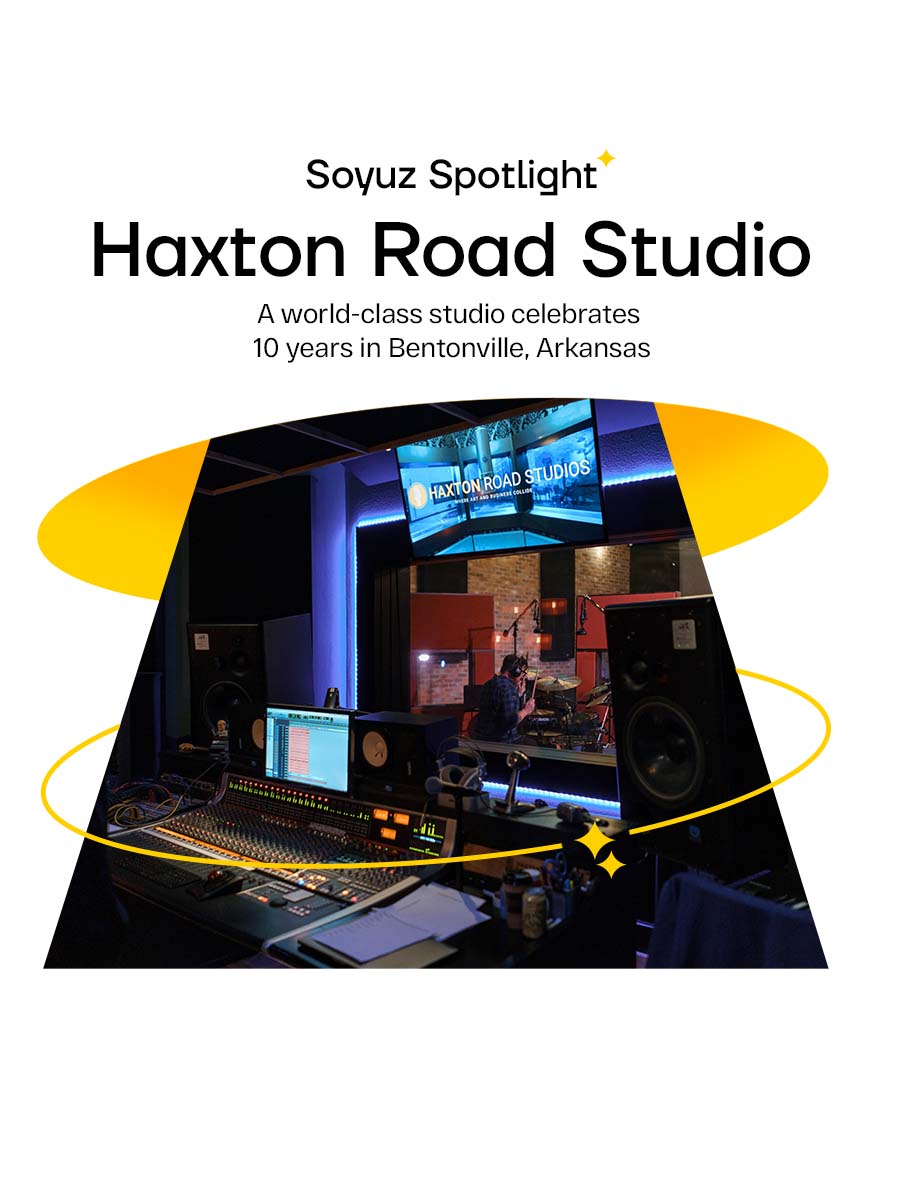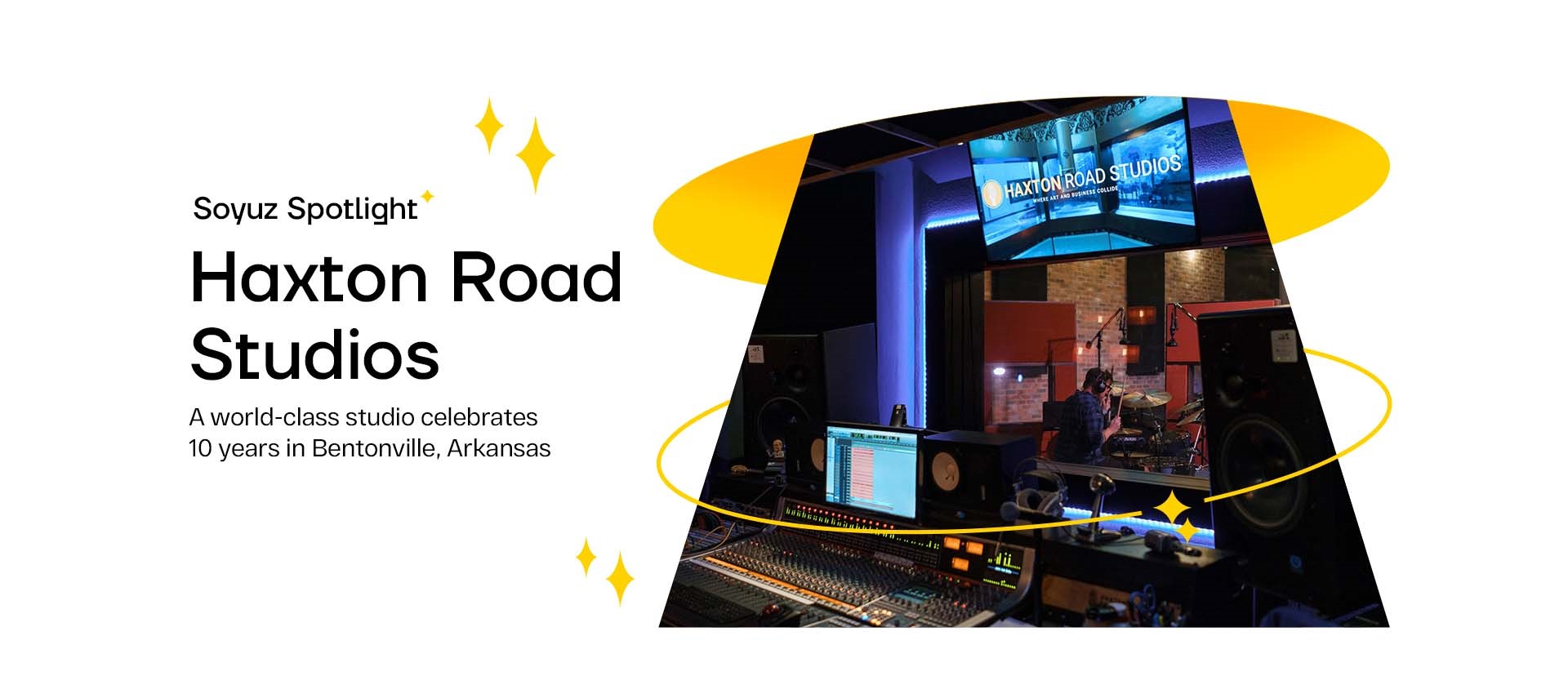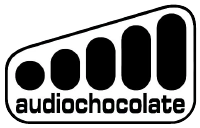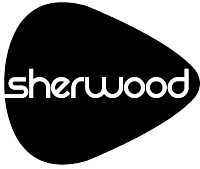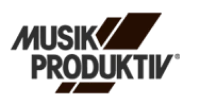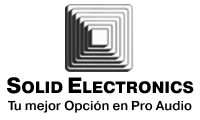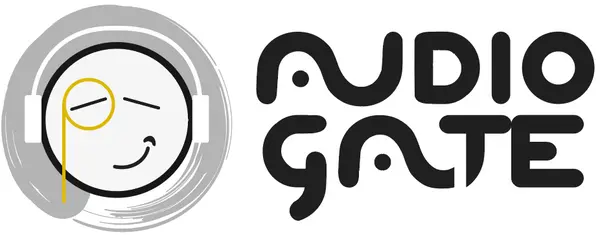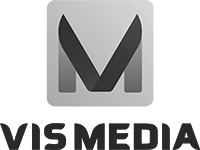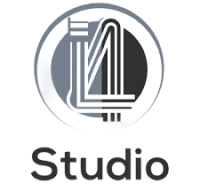With 2023 being his 50th year in the music industry, Garth Richardson’s credits include some of the most iconic albums of all time — from Rage Against the Machine’s debut album to records by the Red Hot Chilli Peppers, Mötley Crüe, and Taylor Swift.
We had the chance to chat with Garth about some of his career history and highlights, from coming up under his father to working with RATM and other Canadian producers like Bob Ezrin. He was also kind enough to share his thoughts on Soyuz microphones.
Hi Garth. Thanks for taking the time to talk about your career. Being the son of famed producer, Jack Richardson, what are some things you learned from him that helped you in the music industry?
The most important things I learned from my father were to show up on time, to care about the projects I’m involved in, and to not stop until the music sounds right. Recording engineers are working with artists who might be burdened by stress and other emotions, and my dad was a master at dealing with that. He knew when to criticize but also knew when to offer kind words, which is the part of a producer’s role that’s very important.
You’ve said in the past that being a “professional” in the music industry starts when you first get paid for a gig. Do you remember your first paid gig?
I do. I produced a record for a Canadian band called The Numbers that was signed to Attic Records. Their budget was $2,500 and I got paid $500. When I go back and listen to what we did, everything sounds out of tune and offbeat (laughs). It drives me crazy, but I didn’t know what I was doing back then.
Apart from one-off gigs, was your first actual job at Phase One Studios?
I was working at my dad’s studio prior to that, which was called Nimbus 9 Productions. I’d go to school, sleep during class and take the bus to the studio afterwards. Then I’d clean the facilities and sit in on all the sessions—of which my first real one was for the Peter Gabriel 1 album. That’s when I said to myself, “This is what I want to do with my life”.
The reason I ended up at Phase One Studios was that my dad was working with a band there. The owner needed something to be picked up and I offered to do it. When I walked in ten minutes later, he was like, “Why are you back so soon?” and I said “I’m done with the task,” which took him by surprise. It turned out their other runner would take three hours to do one job, so they decided to follow him during his next shift and found out he was taking the owner’s car to hang out on the school yard and pick up girls. So they asked if I wanted his job and I accepted.
What was one of your most memorable experiences at Phase One?
A German producer called Michael Wagener came in to work with a band called Brighton Rock. He grew a bit frustrated during the course of the session, and I overheard him talking to his wife on the phone, saying, “Maggie, get me the hell out of here. The band is sleeping in the studio and I have a second engineer who can’t even talk.” He was referring to my stutter, and when I heard that, I decided to work extra hard to prove that it wasn’t a hindrance. I made sure Michael was absolutely comfortable, and by the end of the session he said, “Thank you for your work. I’m gonna bring you down to California sometime to work with me.” — which he did. The first record I did with him was for White Lion Pride.
How did you end up later working with the Red Hot Chili Peppers on Mothers Milk in 1989?
I was dating a girl who worked for their manager, so I ended up becoming friends with both him and the band members. When Michael Beinhorn was brought on to do Mothers Milk, they asked if I wanted to be the engineer. So it was just about being in the right place at the right time.
One of your most famous credits is producing/engineering Rage Against the Machine’s debut album. Is it true you spent $20,000 of your own money on that?
Yes it is. Michael Goldstone reached out to Michael Wagener and asked “Do you know any young engineers who can do this record?” —and he recommended me. So I met with Michael Goldstone and he played me the band’s demo. Upon hearing it, I was like, “What the heck is this? Holy crap…” I went to see them play live in a little room in Van Nuys and I was so blown away that I couldn’t talk; my stutter got so bad I couldn’t articulate anything. I called up Michael Goldstone and said the band was amazing. He asked if I could start on Monday. At the time I was working on a band with Eddie Kramer called Power Trio from Hell. They would always show up to the studio eight to ten hours late, so the next time we met, I said, “Guys, I have good news and bad news. The good news is that you’re going to make a great record. The band news is that it’s not with me.” I walked off that album to work with Rage Against The Machine, but they hadn’t signed their publishing deal yet, so I fronted them $20,000 using my credit cards to pay for studio time, tape, drum heads, etc. The funny thing is, my father mortgaged his house in 1968 to pay for the song “These Eyes” by The Guess Who, so we both ended up doing similar things.
Did the band pay you back the $20,000?
Yes, of course they did (laughs).
There’s a lot of lore surrounding how that album was made. Is it true all the vocals recorded on an SM58?
Yes, it is. I can give a breakdown on some things: I’d already heard them play live and was blown away, so the pre-production process involved me being their front-of-house on a few shows. When we went into the studio, I didn’t want to put them in a cage by making them wear headphones and have designated standing positions, with Zack in a vocal booth. So I brought in a concert PA system and stationed Brad’s drums behind it. He was the only one wearing headphones. I put Tom and Tim’s amps in the back rooms and ran the drums, bass and vocals through the PA system. I wanted the band to play like they were doing a live show and it worked. “Settle For Nothing” is the only track where we slipped up a bit: Tom wanted to replay his solo, and you can hear a bit of the old one in the drum mics.
How were you able to avoid the bleed from the PA destroying the recording?
I’ve been asked that question a thousand times (laughs). As long as they’re playing the same song, the bleed isn’t an issue. Just listen to Frampton Comes Alive! or Alive III by KISS – they’re both live records that sound brilliant. Had we done it any other way, the record wouldn’t have been the same. I just had to make sure the bleed into the drum mics wasn’t too bad. We tight-mic’d every part of the kit, including the cymbals; the mics were only a few inches away, and we mic’d the PA system too, with mics on the floor to catch the subwoofers.
How many overdubs were done?
The foundation for all the tracks were live performances, but we did have to go back and fix a few things, like Tom overdubbing some guitar parts. For “Freedom,” Zach had blown out his voice and needed some days off, so when it was time to redo them, I cleared out the control room and had him stand in front of the console with the big speakers and turned them up as loud as I could. He sang into the SM58 as if it was a live show, with one hand behind his back and the other one waving.
The one song that was done 100% on the floor was “Settle For Nothing.” After it was recorded, I remember saying, “Ok, we’re done,” and Zach was like “But we need to redo the vocals…” I said no because he’d already nailed it.
Given the success of that album, how come you didn’t work on any future Rage Against the Machine albums?
Because the band became huge whilst I was still an unknown producer. I think they wanted to go with a sure thing and chose Brendan O’Brien for the next one. This is strictly folklore, but I’ve heard that Tom and Zack were at odds during that time, and as a result, it took them three years to make the Evil Empire album. From what I heard, there were fights in the studio, so it was a blessing I avoided that because you never want to be involved in a project with infighting.
On one end of the spectrum, you’ve recorded Rage Against the Machine, and on the other end you’ve also worked on Taylor Swift albums, which is quite the contrast in genres.
It is (laughs). I was asked to help on the Speak Now live album by Bob Ezrin. My father basically trained Bob and gave him one of his first producer gigs with Alice Cooper. They co-produced Love It to Death, which launched Bob’s career, so when he was doing the Taylor Swift album in Vancouver, he asked me to get involved.
Your current studio in British Columbia is called The Farm, and it’s also the home to Nimbus School of Recording. How have things been going with that?
It’s my seventeenth year at The Farm and I often say this is version 9.2 (laughs). I’ve moved around over the years from city to city and studio to studio, until I eventually took over Little Mountain Sound and opened up my school, which I later moved to its current location. Unfortunately, we couldn’t keep it afloat after the pandemic. We used to have 120 students prior to 2020, but last spring we only had 20. We also couldn’t get visas for six of our students, and that cost us around $600,000. Additionally, Vancouver has raised their property tax; if you have a two-story building that’s been zoned for six storeys, you get taxed for the air above. So when that happened to us, we looked at the numbers and decided to close things down. But we had some amazing students come through here. An example was David Pimentel, aka Pomo, who worked on Jean Batiste’s, We Are, which won a Grammy for Record Of The Year.
What’s your approach to gear nowadays? Are you still an analog-head?
I’m still a big analog enthusiast. I didn’t use any plugins when they first came out, especially since they weren’t very good in the beginning. I fought them off for years but many of my analog units would eventually break down, so I finally decided to give up and embrace digital. I still use analog gear to capture my recordings though, so when Dave from OMS Canada sent me a pair of 013 FETs, I thought they sounded really good. They’re amazing as overhead mics, and I use them on acoustic guitars and piano too.
What are your thoughts on the Soyuz Launcher? Have you used it on any of your recent work?
I use it on my master bus because it has some really nice transformers that impart depth and thickness to the sound. When you work exclusively in the digital world, things can start to sound flat, so I wanted to go outside the box for some beef. I used it on Devin Townsend’s Lightwork album that came out last year.
It’s been great talking to you Garth. Thanks a lot for taking the time. Having been in the music industry for over 50 years, what’s your primary focus moving forward?
It’s always exciting to be in a room with someone that’s talented and be able to record what they’re doing. When I’m away from it, I miss not being in the studio with a band, so I keep doing it. But I don’t want to be 90 years old with a patch cable around my neck, so I’ll give myself ten more years or so until I retire. I also love to teach and give back to the youth. When I came up in the industry, people were always mentored and didn’t suffer from getting misinformed by the Internet, so we as the older people have to give back and that’s still one of my passions.


